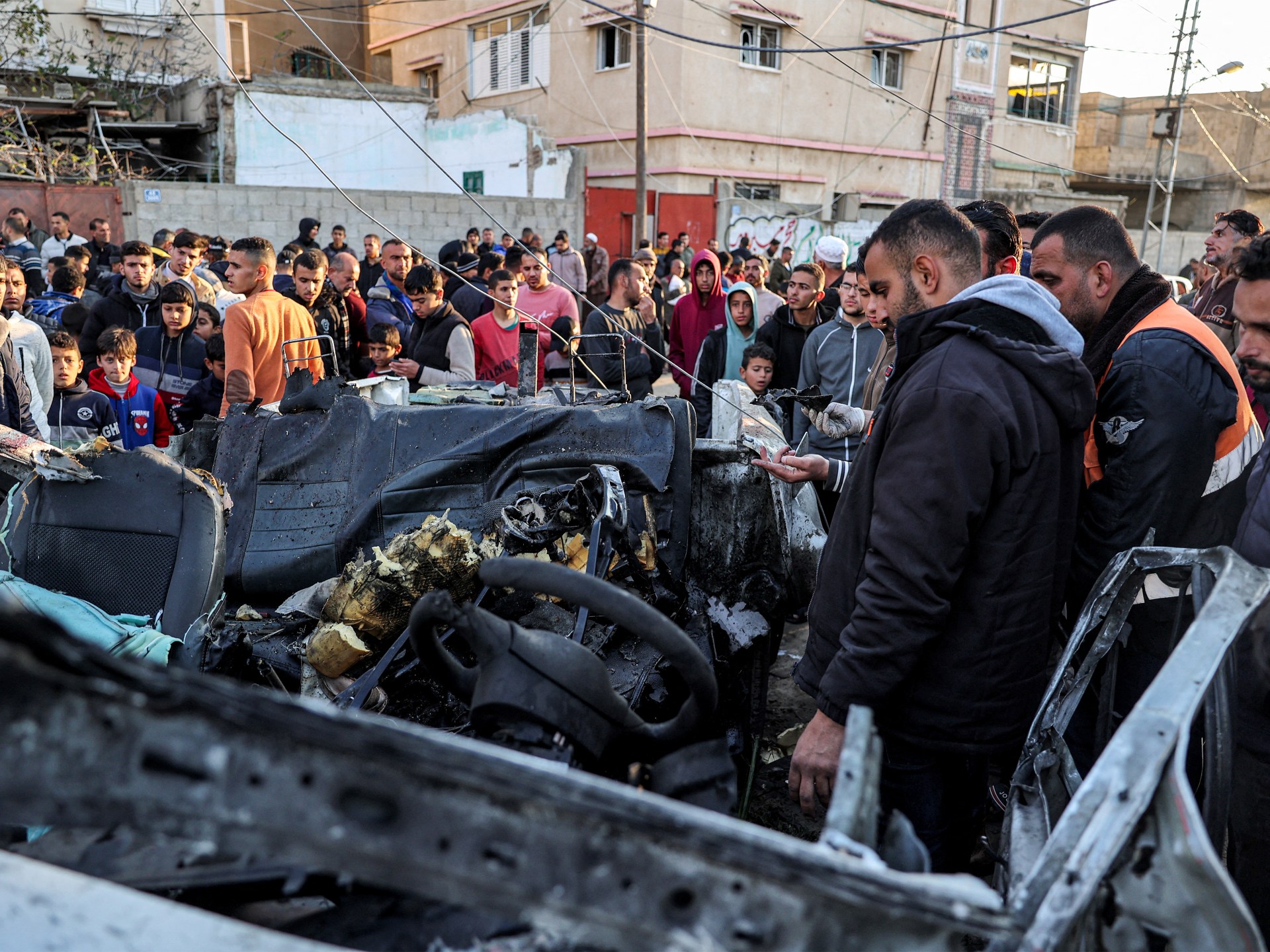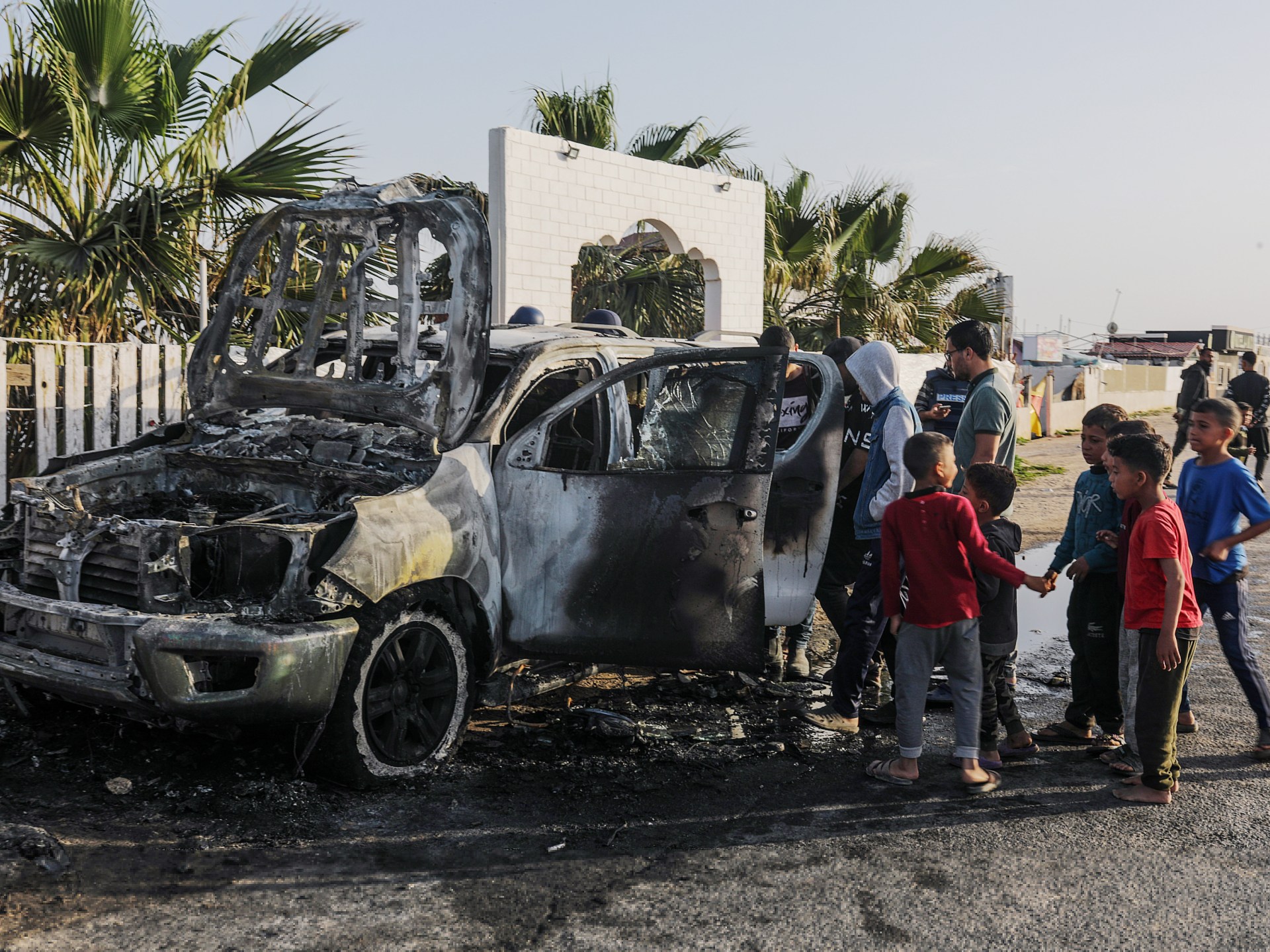‘The future is dark’: Inside the Brazilian businesses shattered by floods | Floods News
Rambo’s store is one of around 45,000 businesses in the state capital that have been impacted by these devastating floods. Porto Alegre’s Chamber of Store Managers estimates that the total cost to commerce in the city was 487.7 million reals ($91m) between April 29 through May 26.
The floods began in late April after torrential rains inundated the city and surrounding mountains. The waters poured through towns and funnelled into the Guaiba River, which runs alongside Porto Alegre, causing the water to rise some 5.33 metres (17.48 feet) higher than normal — levels never before seen.
The previous high was 4.75 metres (15.6 feet) above normal, set during the historic floods of May 1941.
The owners of businesses near the Porto Alegre waterfront say they watched the floodwaters rise each day, until the river was at their doorsteps and flowing into their stores and restaurants.
“We were here almost a week without sleeping,” said Eni Verdejo Monteiro, the middle-aged owner of Lanches da Tia, a sandwich shop up the street from Rambo’s office supplies store.
When the waters poured into Monteiro’s premises and the electricity was cut, she and her husband found there was no way to close the large metal gate in the front of their restaurant. Fearing looters, they decided to stay put.
They were right to be vigilant. Dozens of people were arrested and jailed in the first weeks of the flooding after trying to break into and rob unprotected homes and businesses. Just in the town of Eldorado do Sul, $6m in equipment and products were stolen during break-ins at 17 businesses.
“Our son was worried,” Monteiro recalled. “We didn’t have a cell phone, because it ran out of batteries. We didn’t have any contact with anyone. No electricity. And the only thing you heard were the helicopters and the people screaming for help. There is no way to describe it.”
Like Rambo and her husband, Monteiro and her family are now trying to pick up the pieces.
“We have to talk about things a lot,” said Monteiro’s husband, Joao Batista Coelho. “We’re going to take a hit in the next two or three months. It’s all going to be a loss. We have no income. We lost our refrigerator, stove, cabinets, counter.”
And they have to pay rent. “The future is dark,” said Coelho, holding back tears. “But we can’t just give up.”
State officials have said the flooding tragedy was the worst climate disaster in the history of southern Brazil. Experts believe reconstruction costs across Brazil’s southernmost state of Rio Grande do Sul could amount to some $4bn. More than 90 percent of the municipalities in the state were impacted — 2.3 million people.
The scale of the affected area is huge. Rio Grande do Sul is larger than the size of the United Kingdom. Six hundred thousand people were pushed from their homes. Fifty thousand are still in shelters. Rubble lines streets in towns across the state, as residents clear out their once cherished possessions and wait for them to be picked up by city clean-up crews.
Some areas have been hit worse than others. Entire sections of towns in the mountains north and west of Porto Alegre were obliterated by inundated rivers, which carried away homes, stores and businesses.
The town of Arroio do Meio was one of the hardest hit. Brazil’s President Luiz Inacio Lula da Silva visited it last week and walked with residents through city blocks that no longer existed — wiped clean by the floodwaters.
In the state capital, the devastation is best summed up as a tale of two cities. Low-lying areas close to the river, including City Hall and the historic city centre, were inundated like never before. Meanwhile, some neighbourhoods higher up on the hillsides seemed to carry on as usual, except that electricity and water were cut for several days as pumps and the electrical grid went offline.
Now, the city is re-emerging, but it’s a slow process. The Porto Alegre International Airport is expected to be closed until the end of the year. As of last week, the neighbourhoods of Humaita, Sarandi and Ilhas were still underwater.
President Lula has promised $10bn for the state’s recovery. The New Development Bank — previously known as the BRICS Development Bank, established by the BRICS states and led by former Brazilian President Dilma Rousseff — has promised another $1bn.
Nevertheless, it will take time for reconstruction to begin. Continued rains, strong winds and sputtering infrastructure have all slowed recovery efforts.
Check out our Latest News and Follow us at Facebook
Original Source







